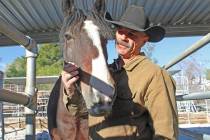Strong core helps keep life in balance
About one-third of Americans age 65 and older and more than half of those over age 80 suffer from falls as a result of balance-related conditions. Balance declines with age, posing a significant risk to health and well-being. Fractures or broken bones in the hip or back that are the result of a fall can lead to limited mobility, loss of independence and often other accompanying health conditions.
Most Americans are well aware of the need for exercise, but many may not realize the equal importance of balance training to build strong muscles in the core body and legs. Core balance exercise also helps maintain coordination between the muscles and the mechanisms in the inner ear that control balance.
The following are techniques that can help improve balance:
Standing with your eyes closed: Each day, try standing with both feet on the ground and your eyes closed. Notice how your body sways slightly to correct your stance and keep you from falling over. Swaying becomes exaggerated the closer the feet are together.
If your balance is fairly stable, try standing on one leg with your eyes open. At first, try this for 30 seconds and gradually increase your time. Keep posture straight and look straight forward.
You will notice tightness in your legs and feet, indicating that you are gaining strength as well as balance.
Core body exercises: The core muscles that run the length of the torso are crucial to athletes and dancers because they are the source of strength, power, quickness and agility. They are also crucial to aging adults because of their key role in posture, coordination and balance.
Pilates, yoga and dance are good for developing core body strength. So are basic floor exercises such as sit-ups, crunches and push-ups.
Keep your legs strong: Regardless of your equilibrium, your legs have the ultimate task of keeping you upright. It is important to keep your legs strong by using them. Walking, jogging, biking or climbing stairs are all great ways to build strength in the legs. Two good exercises for the legs are lunges and squats.
Practice tai chi or yoga: Recognized for its ability to improve flexibility and reduce stress, tai chi is also believed to promote physical balance as well.
Improved balance also is one of the main benefits of yoga. One goal of yoga is symmetry and coordination throughout the body — left and right, front and back, high and low.
Practicing these techniques on a daily basis will assist with gaining strength and balance. In older adulthood, ensuring balance becomes increasingly important because of fall risks.
Maintaining healthy exercise habits can significantly decrease the odds of becoming a victim of falls, fractures and broken bones. Limited mobility because of these conditions often times develops into co-occurring illnesses that can lead to a downward curve in overall health.
Making an effort to keep all the components working properly will help improve balance and prevent falls or better sustain fall-related injuries.
To Your Health is written by the staff of Boulder City Hospital. For more information, call 702-293-4111, ext. 576, or visit bouldercityhospital.org.











